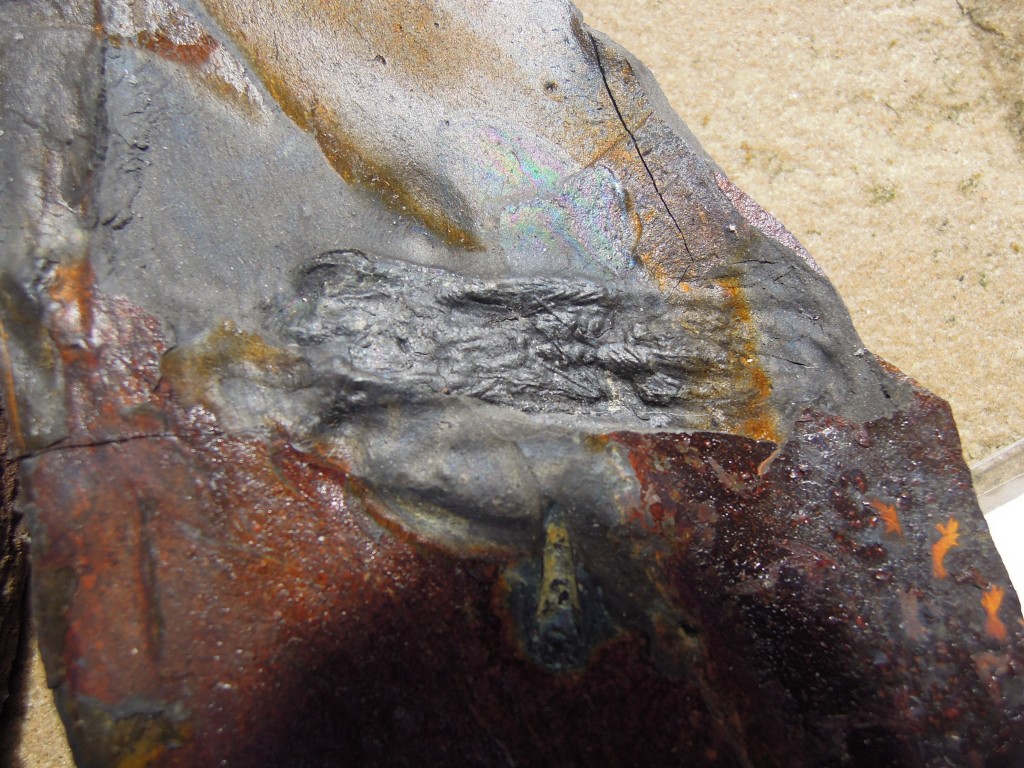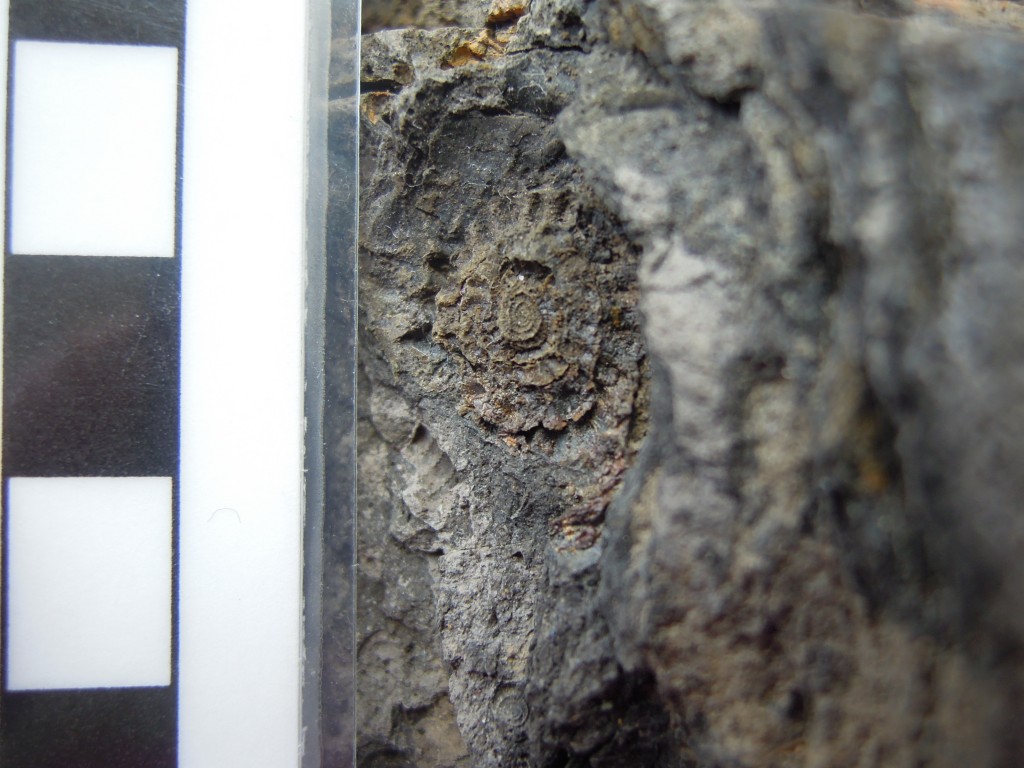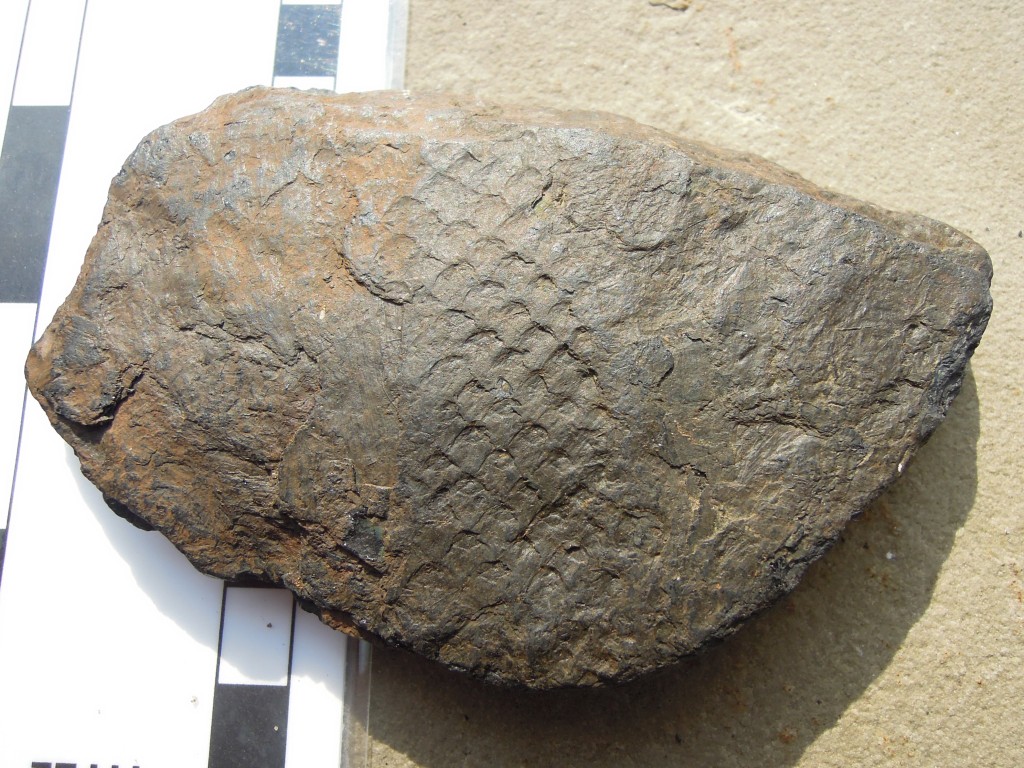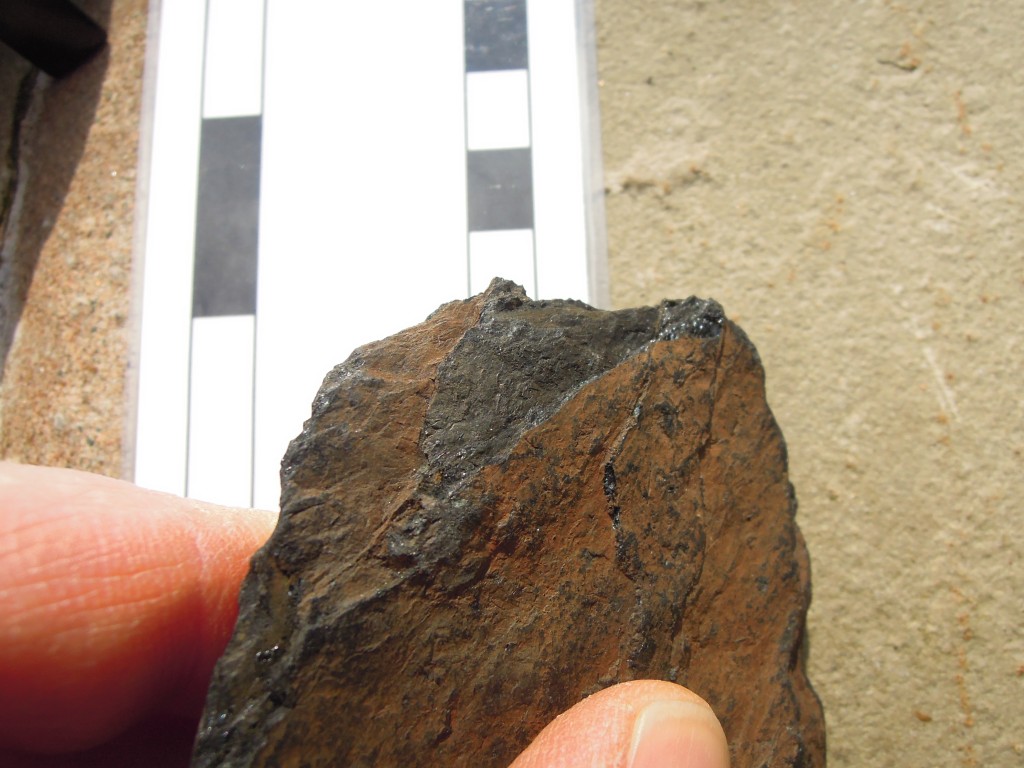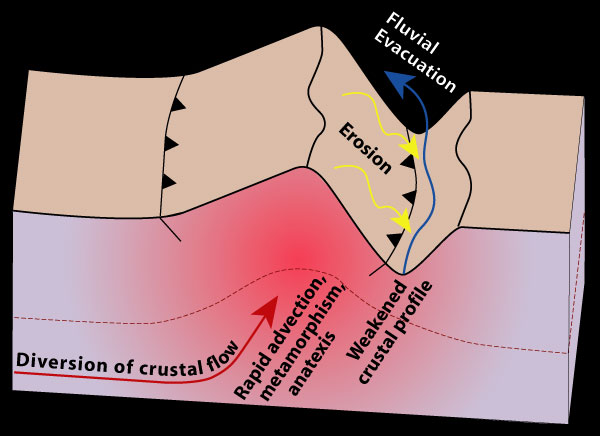The geology of the North of England is where our modern industrial civilisation was born, based on the burning of fossil life. I’ve wanted to write about the fascinating geology I grew up with for a while. I’ve been spurred into action by Accretionary Wedge #46 where Cat asks us to write about “Geology, Life and Civilization”.
The spine of northern England is the Pennines, ending in the south with the Peak District, where I come from. This area is almost entirely made up of Carboniferous sediments that have shaped the landscape and the culture of the area.
True Grit
One of the most characteristic landforms of the Pennines is the gritstone crag.
These thick resistant layers of sandstone form prominent lines of outcrops (crags), with gentle dipslopes in between. Generations of rock climbers have been trained on them. The cliffs are low, but make for great climbing. You can battle with gravity all day and be in the pub half an hour later.
The sandstone is often coarse (gritty) and was traditionally used to make Millstones, which are now the emblem of the Peak District national park. ‘Millstone Grit’ is great building stone and the area is dotted with quarries. In some areas it forms easily into regular slabs, perfect for building drystone walls or making cobbled streets.
The crags of sandstone have fabulous names, like Froggat Edge, Stanage Edge and ‘the Roaches’ and these names enrich the stratigraphy and therefore the geological maps of the area.
Gritstone is poetic as well. The great English poet Ted Hughes grew up in these landscapes and wrote about them. In “Still Life” he writes that “Outcrop stone is miserly” and is “Warted with quartz pebbles from the sea’s womb”. The outcrop marks the ‘fly-like dance of the planets’ and thinks itself eternal, but only because it is ignorant of what water will do it, over time. Elsewhere in Wodwo he writes of walkers escaping the valley onto the moors above. The Pennines and Peak District have long been a means of release for inhabitants of the industrial cities and valleys that sit below. The mass trespass of Kinder Scout (type locality of local stage “Kinderscoutian”, 318 to 317 million years ago) in the 1930s was in favour of the ‘right to roam’ and is seen as a milestone in English social history.
Mud, glorious mud
The gritstone crags are only prominent because they are surrounded by softer rocks. Mudstones and shales are common in this area, they form the plain backdrop on which the gritstones can perform. A humble, elusive rock type, best found in stream beds the shales are not devoid of interest. Far from it – they were teeming with life.
Below is a section of an early armoured fish.
I don’t know what this is, maybe nothing.
At times the shales are clearly marine (mostly, like the sandstones, they are not). In distinct ‘marine bands’, goniatites (ammonoids) and crushed shelly debris are common.
The clearest goniatite above is middle right, where you can see the parallel lines of the external ornamentation. Here’s a close-up where the spiral shape of the goniatite is more obvious.
Goniatites are marine creatures, but here’s a clear sign of land, a piece of fossil bark. Carboniferous forests were dominated by primitive plants called Lycopods which have leaves growing direct from the stems, leaving the scars you see below.
King Coal
Cat herself mentions Iain Stewart talking about the importance of Carboniferous coal deposits in the history of the Industrial Revolution. Just how important coal was is an area of vigorous historical debate but no-one would argue that industrialisation started in the North of England and that burning of local coal deposits was important.
Let’s start with the roots of the matter. Coal is of course compressed plant material found in seams. At the base of these seams is usually a layer of very pure quartz sandstone. This is a fossil soil, a palaeosol which locally may be known as seatearth, or ganister. Appropriately enough these fossil soils often contain fossil roots, often Stigmaria, with a distinct ‘holey’ appearance.
Coal is relatively rare in the Peak District, where all of these photos and samples were taken (most on a single afternoon in the Goyt Valley). The area contains the transition between ‘Millstone Grit’ deposits and the ‘Coal Measures’ proper. Coal seams are thin and extraction was via shallow ‘bell-pits’ for local use only. The main coal fields were further north in Lancashire and Yorkshire, where whole communities were built up around the ‘pits’.
These coals put the ‘carbon’ into ‘Carboniferous’ – there are massive deposits worldwide but the name was coined in Britain. This was an odd period in earth history, associated with high levels of oxygen (perhaps up to 35% compared with 21% today). One of the lines of evidence for high oxygen are the massive insect fossils found at this time (no photos sadly). These animals depend on oxygen diffusing into their bodies, so the more oxygen, the bigger they could grow.
Coal is fossil plant material, so no surprise that it contains impressions of plants within it.
This weathered piece, from a stream bed, looks rather like shale until you break the end and see it shine. I could have set fire to it and taken a picture, I suppose, but that would just be showing off.
Cycles
Together, these rock types make up most of northern England. What is intriguing is that they often occur in a regular pattern. This is an interesting thing and I shall return to it.
Another form of cycling concerns the carbon locked up in the coal. What was locked below the surface is now floating above it in the form of carbon dioxide. Releasing the power of this buried carbon kicked off our industrial civilisation. How we deal with the powerful effects of the atmospheric version will determine how our civilisation fares in the future.
The first image, of the Roaches, image from Plbmak on Flickr under Creative Commons. All others mine, scale bars are centimetres. If you want to know more about English Carboniferous Geology, this open access book chapter is where to start.





